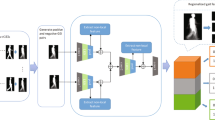Abstract
Identification of a person based on their walking pattern is affected by factors such as camera viewing angle, apparel with the subject, holding a bag, walking surface, and complex situations. These are the covariate conditions in human gait analysis. The covariate conditions change an individual's gait pattern, making it difficult to implement gait recognition in a realistic environment. This work addresses the issue of covariate conditions in gait identification through a fusion of features. Using a pre-trained VGG16 model with four fully connected layers, the dynamic features are extracted and merged with HoG (Histogram of Oriented Gradients) features extracted from the raw GEI (Gait Energy Image) gait templates. PCA (Principal Component Analysis) is then used to lower the dimension of the combined features in order to select the discriminant feature vectors. The CASIA-B dataset is used to examine the efficacy of the suggested technique, which employs an MLP (Multi-layer Perceptron) classifier. The findings show that the proposed technique outperforms other existing approaches in terms of accuracy while walking normally, wearing a coat, and carrying a bag under identical viewing conditions.
Access this chapter
Tax calculation will be finalised at checkout
Purchases are for personal use only
Similar content being viewed by others
References
Han J, Bhanu B (2005) Individual recognition using gait energy image. IEEE Trans Pattern Anal Mach Intell 28(2):316–322
Zhang R, Zhang L, Yu T, Huang J, Yu Y (2021) Feature fusion cnn-lstm network-based gait recognition on covariate of clothing and bag. In: 3rd international academic exchange conference on science and technology innovation (IAECST). IEEE, pp 304–307
Tao D, Li X, Wu X, Maybank SJ (2007) General tensor discriminant analysis and gabor features for gait recognition. IEEE Trans Pattern Anal Mach Intell 29(10):1700–1715
Xu D, Yan S, Tao D, Lin S, Zhang H-J (2007) Marginal fisher analysis and its variants for human gait recognition and content-based image retrieval. IEEE Trans Image Process 16(11):2811–2821
Xu D, Yan S, Tao D, Zhang L, Li X, Zhang HJ (2006) Human gait recognition with matrix representation. IEEE Trans Circuits Syst Video Technol 16(7):896–903
Kathing M, Brahma RK, Saharia S (2022) Effective method to reduce covariate issues in gait-based human identification. In: 2nd International conference on intelligent technologies (CONIT). pp 1–5
Anusha R, Jaidhar CD (2020) Human gait recognition based on histogram of oriented gradients and haralick texture descriptor. Multimed Tools Appl 79(11):8213–8234
Bashir K, Xiang T, Gong S (2010) Gait recognition without subject cooperation. Pattern Recognit Lett 31(13):2052–2060. Meta-heuristic Intelligence Based Image Processing
Huang G, Lu Z, Pun CM, Cheng L (2020) Flexible gait recognition based on flow regulation of local features between key frames. IEEE Access 8:75381–75392
Rokanujjaman M, Islam M, Hossain M, Makihara Y, Yagi Y, et al (2015) Effective part-based gait identification using frequency-domain gait entropy features. Multimed Tools Appl 74(9):3099–3120
Li C, Min X, Sun S, Lin W, Tang Z (2017) Deepgait: a learning deep convolutional representation for view-invariant gait recognition using joint. Bayesian Appl Sci 7(3):210
Shiraga K, Makihara Y, Muramatsu D, Echigo T, Yagi Y (2016) Geinet: view-invariant gait recognition using a convolutional neural network. In: International conference on biometrics (ICB). IEEE, pp 1–8
Fan C, Peng Y, Cao C, Liu X, Hou S, Chi J, Huang Y, Li Q, He Z (2020) Gaitpart: temporal part-based model for gait recognition. In: Proceedings of the IEEE/CVF conference on computer vision and pattern recognition. pp 14225–14233
Chao H, He Y, Zhang J, Feng J (2019) Gaitset: regarding gait as a set for cross-view gait recognition. In: Proceedings of the AAAI conference on artificial intelligence, vol 33. pp 8126–8133
Author information
Authors and Affiliations
Corresponding author
Editor information
Editors and Affiliations
Rights and permissions
Copyright information
© 2023 The Author(s), under exclusive license to Springer Nature Singapore Pte Ltd.
About this paper
Cite this paper
Kathing, M., Brahma, R.K., Saharia, S. (2023). Features Fusion-Based Gait Recognition with Covariate Conditions. In: Borah, S., Gandhi, T.K., Piuri, V. (eds) Advanced Computational and Communication Paradigms . ICACCP 2023. Lecture Notes in Networks and Systems, vol 535. Springer, Singapore. https://doi.org/10.1007/978-981-99-4284-8_22
Download citation
DOI: https://doi.org/10.1007/978-981-99-4284-8_22
Published:
Publisher Name: Springer, Singapore
Print ISBN: 978-981-99-4283-1
Online ISBN: 978-981-99-4284-8
eBook Packages: Intelligent Technologies and RoboticsIntelligent Technologies and Robotics (R0)




